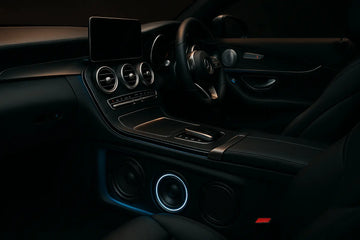Midbass Speakers
Related Collections:
Featured Products
All products loaded
What Midbass Speakers Are Designed to Deliver
Midbass speakers specialize in reproducing the low to upper-mid frequency range that defines the body and rhythm of music. This range is where bass guitars, drums, pianos, and male vocals reside—frequencies that are crucial for warmth and fullness. Without strong midbass reproduction, a sound system can feel thin or incomplete. Midbass drivers fill this gap, adding texture and physical presence that enhances both the energy and realism of a recording. They provide the “punch” that listeners feel in their chest while maintaining clean, musical tone.
Engineering and Acoustic Design
High-quality midbass speakers are built using advanced materials and motor structures to ensure both power and precision. The cones are typically made from fiberglass, paper composite, Kevlar, or carbon fiber—materials chosen for their balance of stiffness and lightness. This allows accurate response at high excursion levels without distortion. Large-diameter voice coils improve power handling and thermal control, while rubber surrounds and damped spiders maintain linear movement. Vented pole pieces and die-cast baskets enhance cooling and reduce compression. Every element of the design contributes to clear, punchy sound with tight control and fast transient response.
Sound Quality and Listening Experience
Midbass speakers define the realism and impact of a car audio system. Their role is to produce low-frequency body while maintaining speed and accuracy. A well-tuned midbass driver delivers the dynamic “attack” in drums, the texture of string instruments, and the fullness of male vocals. They provide a seamless transition between the subwoofer and midrange drivers, ensuring smooth, balanced response throughout the listening range. When installed correctly and powered with clean amplification, midbass speakers produce depth and clarity that transforms a system from ordinary to lifelike.
Applications and System Integration
Midbass speakers are essential components in both 2-way and 3-way systems. In a 2-way configuration, they handle the majority of the audible range up to the crossover point with the tweeter, providing both bass and midrange detail. In 3-way active setups, they focus strictly on the 60Hz–500Hz region, allowing dedicated midrange and tweeter drivers to handle the higher frequencies. This division improves overall accuracy and dynamic capability. Midbass drivers are commonly installed in doors, kick panels, or custom pods, depending on system design and acoustic goals.
Amplifier Matching and DSP Tuning
Because of their demand for power and control, midbass speakers perform best when driven by a dedicated amplifier. Clean, high-current power provides the damping and precision required for accurate cone movement. When integrated with a digital signal processor (DSP), these drivers can be fine-tuned for crossover points, equalization, and time alignment, ensuring a smooth transition to the subwoofer and midrange frequencies. Proper tuning allows midbass drivers to deliver consistent output and tonal balance across all listening positions, maximizing sound quality and impact.
Build Quality and Durability
Midbass speakers are built to endure the rigors of high-output audio. Reinforced baskets prevent resonance, while high-temperature voice coils and adhesives ensure stability under demanding power conditions. The surrounds and spiders are engineered to maintain flexibility over time without degradation. Many models use weather-resistant coatings to protect against humidity, heat, and vibration. This combination of strength and precision allows midbass drivers to perform reliably for years while maintaining the same clarity and definition as when first installed.
Why Midbass Speakers Are Essential for Balanced Sound
Midbass speakers provide the critical foundation of a balanced audio system. They connect the subwoofer’s deep low end to the midrange and tweeter’s upper frequencies, creating a coherent and natural tonal transition. Without them, the system lacks punch and warmth, leaving the music sounding incomplete. Adding midbass drivers instantly enhances energy, fullness, and realism. They are the key to achieving professional-level sound quality, providing the tactile and emotional connection that turns music into an immersive experience.
This collection features midbass speakers designed for precision, depth, and dynamic power. These products help shoppers choose speakers that deliver rich, controlled midbass response with accurate tonal balance and strong impact. This category supports users who want true full-range performance with detailed articulation and the unmistakable authority of dedicated midbass reproduction.
Midbass Speakers
Frequently Asked Questions
What is midbass used for?
How do midbass drivers differ from subwoofers?
Can I use midbass drivers without a subwoofer?
What size midbass should I get?
How much power do midbass speakers need?
Related Articles

Loudspeakers for Cars: Complete Guide to Upgrading Your Vehicle’s Audio System

Best Car Sub and Speakers for Every Budget in 2025

Best Focused Speaker Technology for Superior Sound Precision




